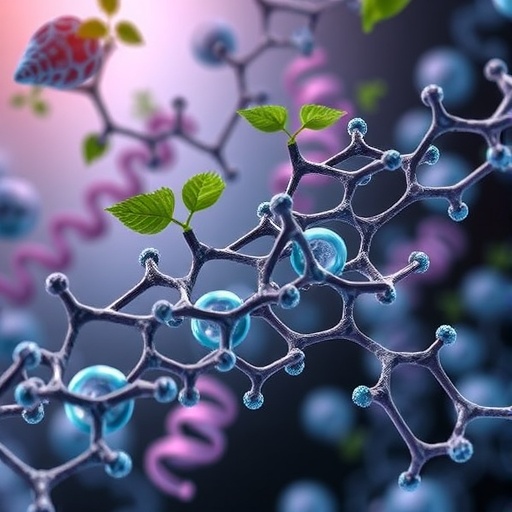In contemporary society, the increasing frequency and severity of natural disasters pose significant challenges, particularly for vulnerable populations. Earthquakes exemplify such disasters, often resulting in devastating outcomes that disproportionately affect individuals with developmental disabilities, including those on the autism spectrum. The inherent characteristics of autism, such as differences in sensory processing and social communication, can complicate the response of these individuals to emergency situations. Consequently, there is a pressing need for innovative educational strategies that effectively impart crucial safety skills. Recent research has illuminated the potential of digital social stories as a transformative approach to teaching earthquake safety to individuals with autism.
Digital social stories are narrative tools that utilize visuals and text to convey information about social situations or concepts. They serve to familiarize individuals with specific circumstances, effectively equipping them with the knowledge and skills necessary to navigate those scenarios. By leveraging technology, digital social stories can be tailored and disseminated more widely and effectively than traditional methods. This adaptability is especially beneficial in an era where digital engagement is increasingly prevalent across all demographics. The integration of technology into the pedagogical landscape offers an augmented platform for enhancing learning experiences.
The researchers, Ulaşman and Sivrikaya, conducted a study aimed at exploring the effectiveness of digital social stories in teaching earthquake safety skills to individuals with autism spectrum disorder (ASD). Utilizing a meticulous methodology that emphasized both the developmental needs of participants and the intricacies of emergency preparedness, their investigation sought to ascertain whether these digital narratives could significantly enhance understanding and retention of safety protocols. Their insights contribute to a burgeoning field of research that seeks to empower individuals with autism by providing them with essential life skills.
The study comprised a series of phases, beginning with the development of digital social stories specifically designed to address various aspects of earthquake safety. This included preparation for an earthquake, recognizing warning signs, and understanding appropriate responses during and after such events. The narratives were carefully crafted to ensure clarity, incorporating concise language and relatable scenarios that resonate with the lived experiences of individuals with ASD. Each digital story was designed to be visually engaging, combining imagery and text to maximize comprehension.
Participants were then exposed to these digital social stories over a carefully structured series of sessions. Throughout this exposure, their interactions and responses were systematically monitored to gauge the effectiveness of the educational tool. Preliminary findings were promising, supporting the hypothesis that digital social stories could significantly improve participants’ knowledge and understanding of earthquake safety protocols. Such results underscore the importance of targeted educational interventions that account for the unique needs of individuals with ASD.
One of the distinct advantages of utilizing digital social stories lies in their versatility. These narratives can be accessed on various devices, allowing for repeated viewing and practice. This feature is particularly critical for individuals with autism, who often benefit from repetition to enhance learning. The ability to revisit material as needed provides a flexible learning environment, which can accommodate different learning styles and paces. Furthermore, the integration of multi-sensory elements—such as audio and interactive features—can further enhance engagement and retention.
Beyond mere knowledge acquisition, digital social stories also promote emotional preparation for unexpected situations. Earthquake scenarios can be inherently frightening; thus, it is essential to equip individuals with both the cognitive skills to understand what is happening and the emotional tools to manage their anxiety. The narratives developed by Ulaşman and Sivrikaya not only convey information but also aim to normalize the experience of an earthquake, allowing participants to anticipate their reactions and reducing fear through familiarization.
Moreover, the implications of this research extend beyond just earthquake safety. The methodology employed could be adapted for a variety of emergency situations, from fire safety to active shooter scenarios, making digital social stories a multifaceted educational resource. This adaptability suggests that the framework established by Ulaşman and Sivrikaya could serve as a model for future innovations aimed at supporting individuals with ASD across a wide range of contexts.
Importantly, the research also highlights the critical role of caregiver involvement in reinforcing the skills learned through digital social stories. Parents, teachers, and caregivers can benefit from understanding these narratives and helping to incorporate the lessons into real-life practices. Engaging in discussions about safety not only strengthens the learning experience but also fosters an environment of support, allowing individuals to practice their responses with guidance. This collaborative approach creates a comprehensive safety net for individuals with autism.
The ethical dimensions of conducting research with individuals who have developmental disabilities are paramount. Ulaşman and Sivrikaya’s study adheres to ethical standards by ensuring participant comfort and understanding throughout the process. This commitment to respectful and empathetic research practices fosters trust between researchers and participants, ensuring that the outcomes are both meaningful and actionable.
As the world continues to grapple with the increasing frequency of natural disasters, equipping vulnerable populations with essential skills has never been more critical. The potential for digital social stories to make a substantial impact in this realm is evident. By synthesizing technology, education, and compassion, researchers like Ulaşman and Sivrikaya are paving the way for a more inclusive approach to emergency preparedness. Their work exemplifies how targeted interventions can effect real change, empowering individuals with autism to navigate the complexities of safety in a world where uncertainty looms.
In conclusion, the ongoing evolution of emergency preparedness strategies reflects broader societal advancements in inclusivity and accessibility for individuals with autism spectrum disorder. The integration of digital social stories into educational frameworks provides a powerful opportunity to educate and empower, ensuring that no one is left vulnerable in times of crisis. As this field continues to grow, collaboration between researchers, educators, and families will be essential in developing comprehensive support systems that cater to the unique needs of all individuals.
The art of storytelling, particularly when merged with technology, has the potential to revolutionize the way we approach education and safety for diverse populations. By embracing new methods and continually seeking innovative solutions, we create a future where all individuals, regardless of their challenges, are equipped not only with knowledge but also with resilience in the face of uncertainty.
Subject of Research: Digital Social Stories for Teaching Earthquake Safety Skills to Individuals With Autism Spectrum Disorder
Article Title: Digital Social Stories for Teaching Earthquake Safety Skills to Individuals With Autism Spectrum Disorder
Article References:
Ulaşman, S., Sivrikaya, T. Digital Social Stories for Teaching Earthquake Safety Skills to Individuals With Autism Spectrum Disorder.
J Autism Dev Disord (2025). https://doi.org/10.1007/s10803-025-07109-y
Image Credits: AI Generated
DOI: https://doi.org/10.1007/s10803-025-07109-y
Keywords: Autism spectrum disorder, digital social stories, earthquake safety, emergency preparedness, education, developmental disabilities.
Tags: autism and emergency responsedigital engagement in learningdigital social storiesearthquake safety skillseducational strategies for disabilitieseffective communication in emergenciesinnovative teaching methods for disastersnarrative tools for safety educationsensory processing and safety awarenesstechnology in special educationvisual learning for autismvulnerable populations and natural disasters





